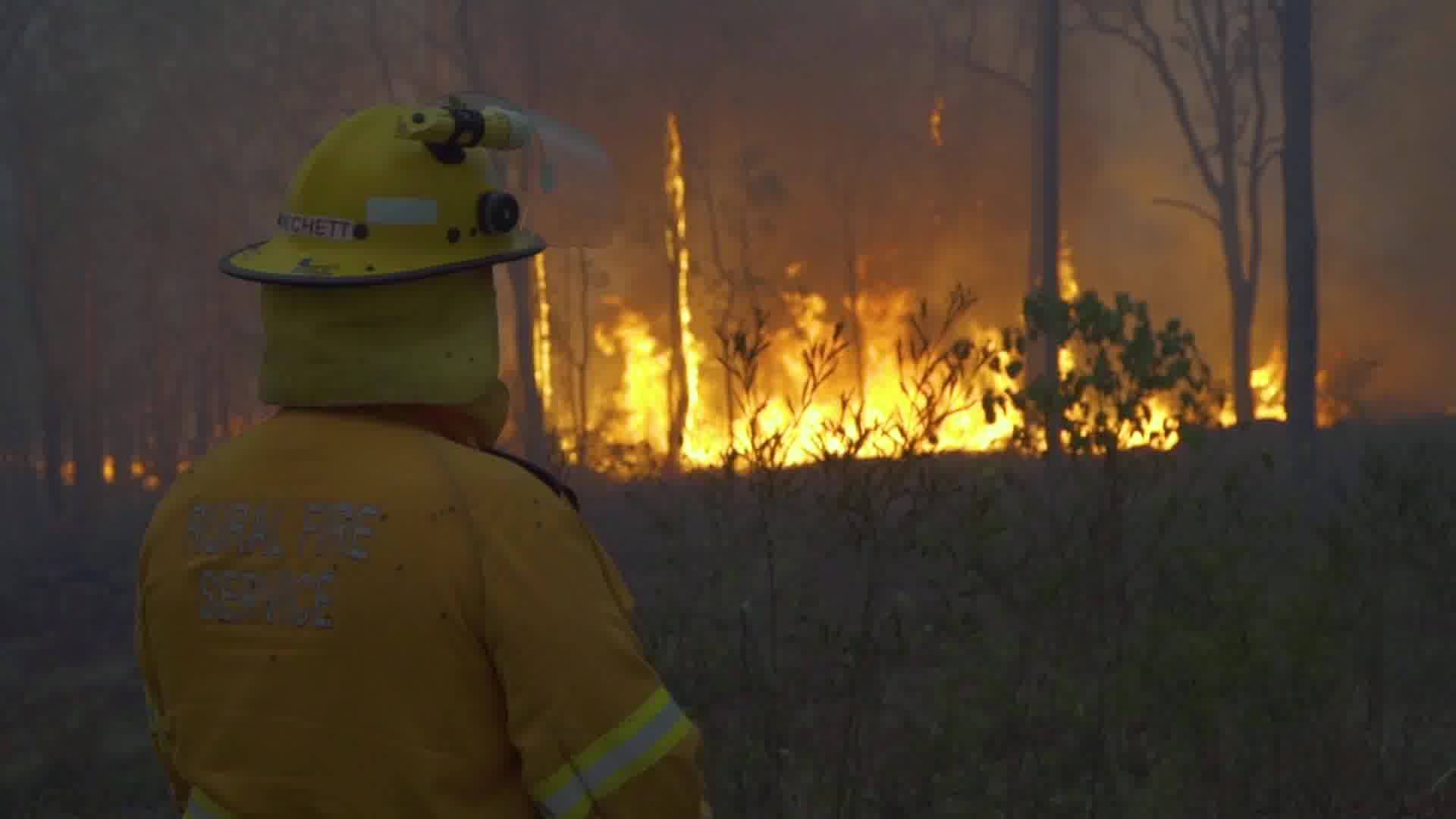 WITH millions of hectares of Northern Australia currently on fire, the role of grazing animals for fire mitigation and avoiding associated emissions has been creating discussion.
WITH millions of hectares of Northern Australia currently on fire, the role of grazing animals for fire mitigation and avoiding associated emissions has been creating discussion.
Large parts of the Northern Territory, Western Australia and Queensland have all burnt in the past two months – with many of those blazes still active.
With the fires happening at the same time the microscope is being put on methane from livestock, some in the cattle industry have been calling for greater recognition of the role livestock play in avoiding emissions from fire.
Well-known Western Qld producer George Scott took to X(Twitter) to call out the emissions coming from fires in the NT.
“How much carbon have the Barkly and Tanami fires released?,” he said.
“The entire pastoral estate would burn every 3-4 years without cattle producers. We prevent them. We should be credited.”
How much carbon have the Barkly and Tanami fires released?
The entire pastoral estate would burn every 3-4 years without cattle producers. We prevent them. We should be credited.
@MichaelGuerin
@AdamCoffeyNT
@sokitomiImages from @MattBrannRURAL pic.twitter.com/eiYEpQNGl1
— George Scott (@NtDrifter) October 18, 2023
Fires are a significant source of greenhouse gas emissions with the Australian Government estimating 830m tonnes of carbon dioxide equivalent was emitted in the 2020 black summer bushfires. A big wildfire season in Canada is estimated to have released 290mT of carbon.
The Federal Government’s Department of Climate Change, Energy, the Environment and Water noted that while they are significant source of emissions, freshly burnt forests turn into a big carbon sink in the years following as they recover – otherwise known as the fast carbon cycle.
Hard to make comparisons
Beef Central contacted a handful of scientists to see if any studies had been done comparing the climate damage of fires to that of livestock methane.
University of Melbourne professor Richard Eckard said the main issue with comparing the two was the debate over whether fire emissions are “anthropogenic”, or a result of human activity.
“We would need to have hard data on historical the frequency and emissions from bushfires, to then demonstrate the difference in bushfire frequency because of livestock management, and then be able to separate that effect from the loss of that same carbon from overgrazing and drought,” he said.
University of California Davis professor Frank Mitloehner pointed to a study his team had done on grazing areas in California. It found that after accounting for methane and nitrous oxide emitted by cattle consuming forage, there is a modest reduction in CO2e associated with grazing in grasslands that burn.
However, Prof Mitloehner was reluctant to make comparisons between the two and has been lobbying for livestock methane to be accounted for on its own.
Comparing apples with apples
Cattle Australia interim chief executive officer and director Adam Coffey has also been campaigning for a change in the way methane emissions are accounted for.
Mr Coffey said he would like to see a comparison made between methane from livestock and emissions from bushfire.
“I think we’re at risk of not comparing apples with apples. While we focus on curtailing ruminant emissions, other major sources of emissions get a free pass,” he said.
“We need to shift the conversation to ‘how do we manage our biomass’; particularly relevant to Australia with our large areas of non-arable land.
“This feeds into the argument for climate neutrality targets for our red meat industries as we need to talk about the biogenic carbon cycle more seriously otherwise we are staring down the barrel of serious unintended consequences by well meaning, but ultimately misguided regulation and policy development, which isn’t taking into account the full picture.”
Mr Coffey said if it was debatable that emissions from fire were not caused by humans, than there was a similar argument to be made about livestock methane.
“If we don’t regard fire emissions as anthropogenic due to the basic nature that “fast carbon cycles” follow then why do we regard ruminant emissions as anthropogenic?
“Granted, we have domesticated ruminants for our own protein source and it makes sense on that basis but if we remove domesticated ruminants (or herbivores) they are going to inherently be replaced by native animals and/or there will be a greater incidence of biomass rotting and burning – all of which create emissions.
“I could also argue that we’ve fundamentally changed the basis on which fires behave in Australia due to land use change – whilst we always talk about land use change in reference to agriculture where are the continuous flashpoints every time we get major fire events on conservation land with unmanaged or mismanaged biomass.”
- To read the full UC Davis paper click here

